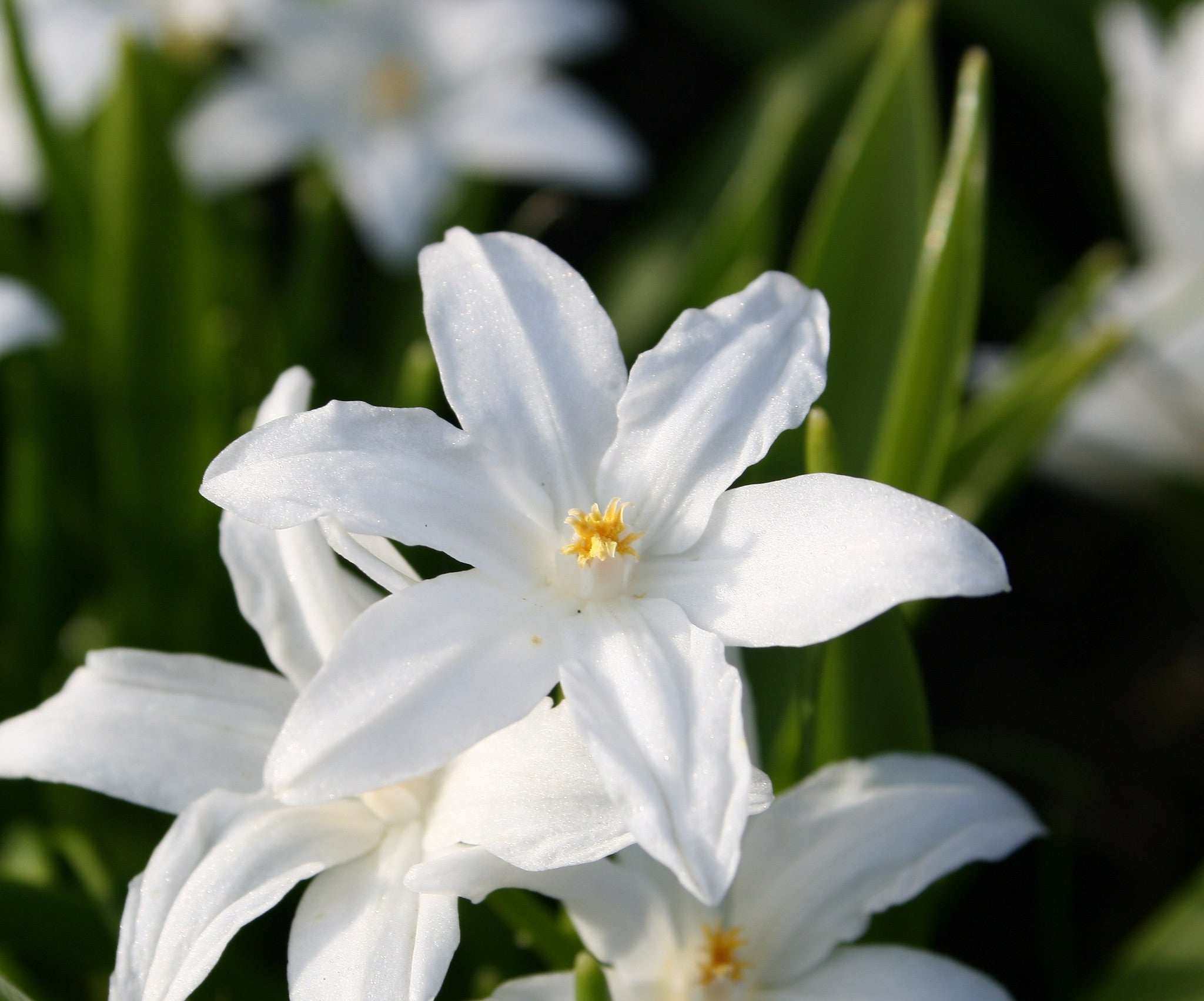Chionodoxa luciliae 'Alba'
Approx. 0.5 litre pot
About this cultivar:
Chionodoxa luciliae 'Alba' is the white version of the species named after Lucile Boissier, the wife of the Swiss botanist Pierre Edmond Bossier in 1885. A classic.
- Position: Full sun, partial shade
- Soil: Almost any soil, grows well in Ballyrobert
- Flowers: March, April
- Other features: Grows well in Ballyrobert
- Hardiness: Fully hardy - grows well in Ballyrobert!
- Habit: Tufted, Clump forming
- Foliage: Deciduous
- Height: 10 - 20 cm (0.3 - 0.6 ft)
- Spread: 10 - 20 cm (0.3 - 0.6 ft)
- Time to full growth: 2 to 5 years
- Plant type: Herbaceous Perennial, Bulb
- Colour: White, green
-
Goes well with: -
About this genus:
Chionodoxa (kye-oh-no-DOKS-uh) is a small genus of bulbous perennial flowering plants in the Asparagus family (Asparagaceae). I believe it was first described by the Swiss botanist Pierre Edmond Boissier in 1844. It gets its name from the greek chin, for snow, and doxa, from snow. Hence the common name "Glory of the snow". The name reflects the habit of flowering in high alpine zones when the snow melts in spring.
The genus is endemic to the eastern Mediterranean, specifically Crete, Cyprus and Turkey. The blue, white or pink flowers appear early in the year making them valuable garden ornamentals.
The taxonomy of the genus is confused and there has been considerable confusion over the correct names of species grown in gardens. The RHS even did a report in 2005 about this issue! Several of the species are very similar, and the number of species recognized as distinct varies significantly from one source to another. For example, plants occurring in Crete have at one time or another been put into three species: C. albescens, C. cretica and C. nana. The Royal Horticultural Society distinguishes between C. forbesii and C. siehei; other botanists recognize only C. forbesii. Even worse, many people regard the genus as Scilla and not Chionodoxa!
What do I do? I copy the RHS. Why? because everyone else, who isn't a botanist, does the same!
Frankly and thankfully (Frankfully? Thankly?) most people are just happy with the flowers.
Easy to grow, they require light or part shade when in growth, but can be grown under deciduous trees or shrubs, as their foliage dies down after flowering.




